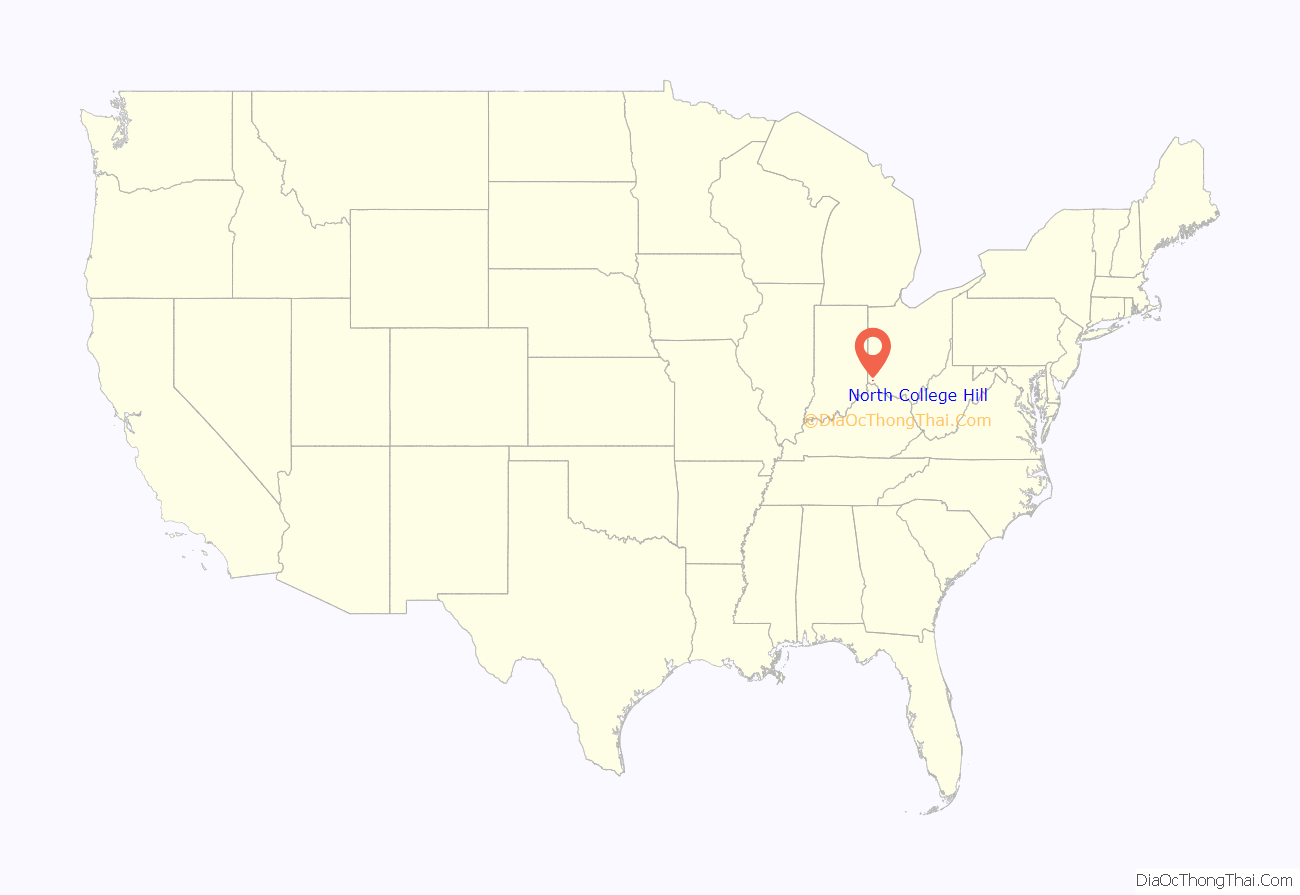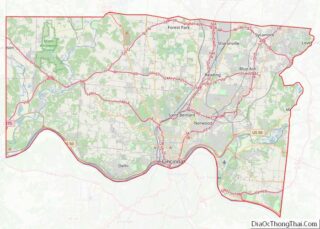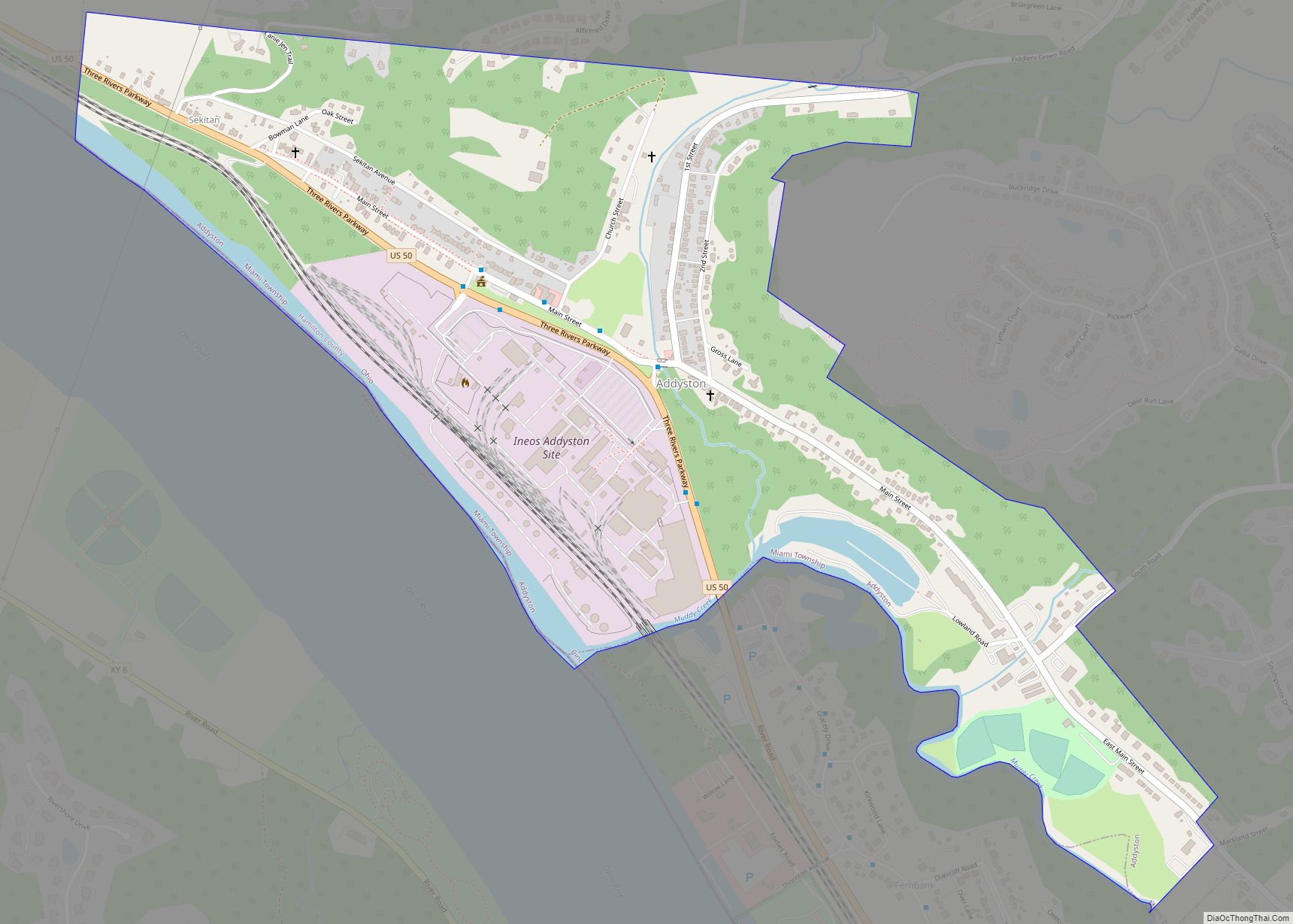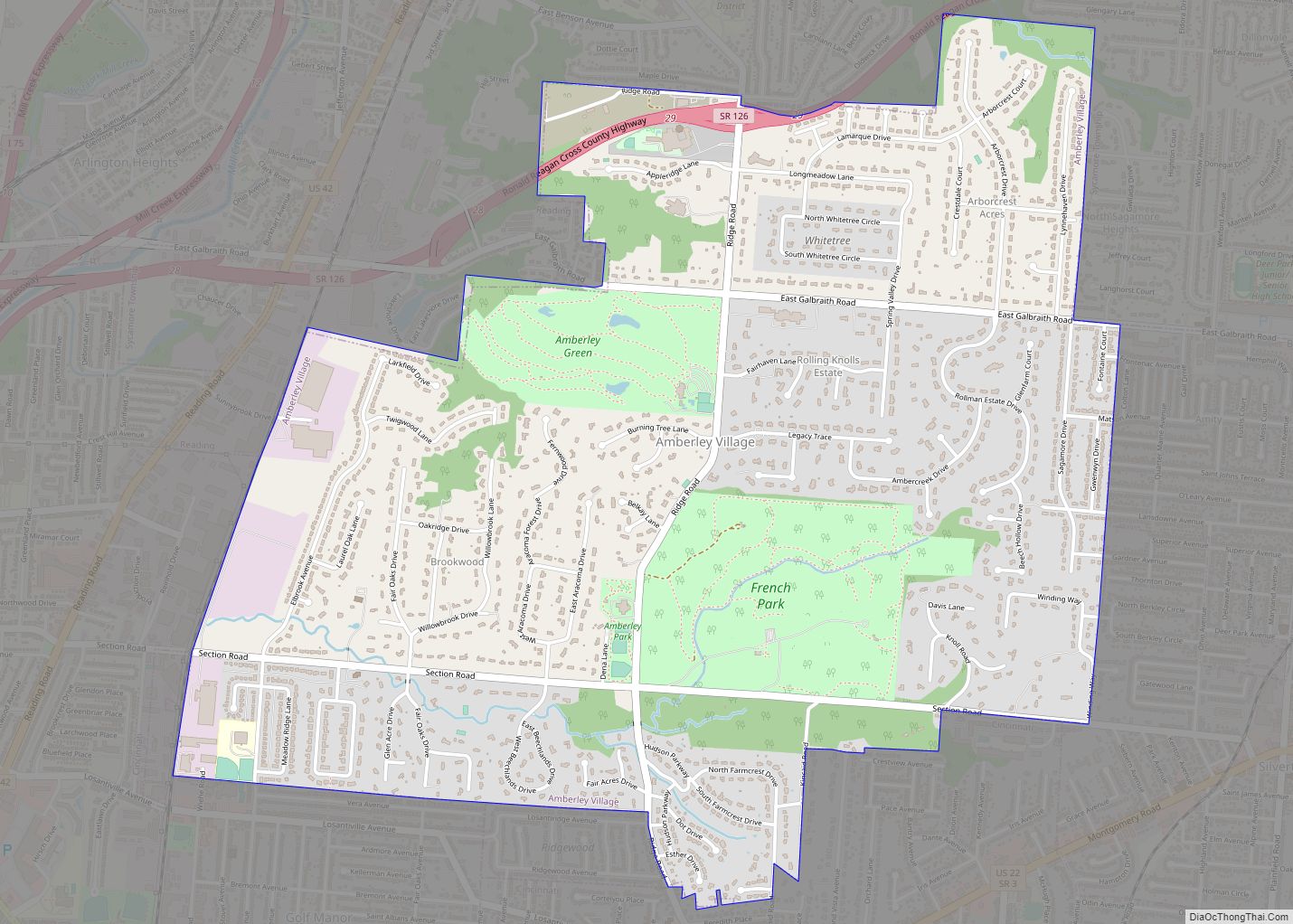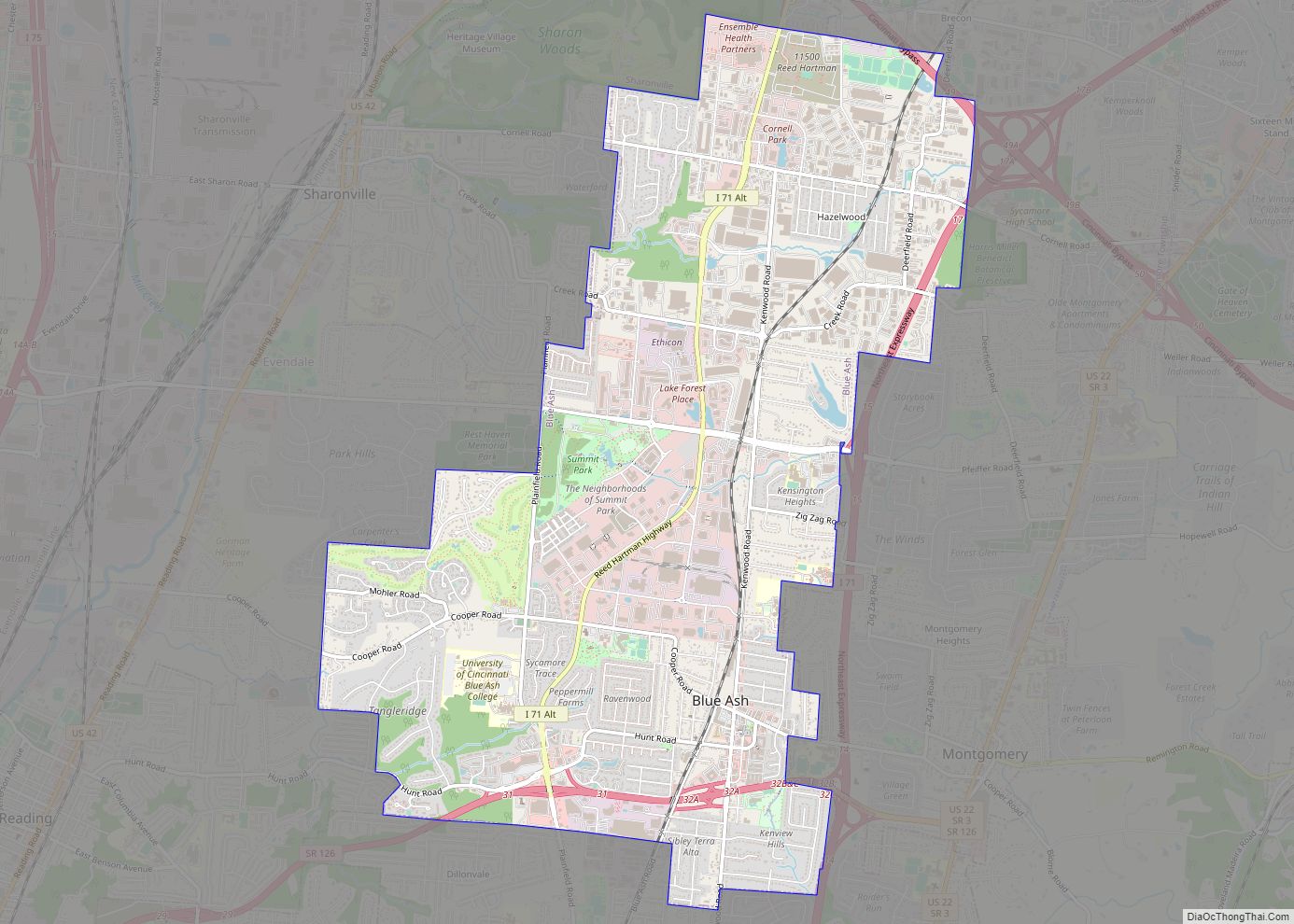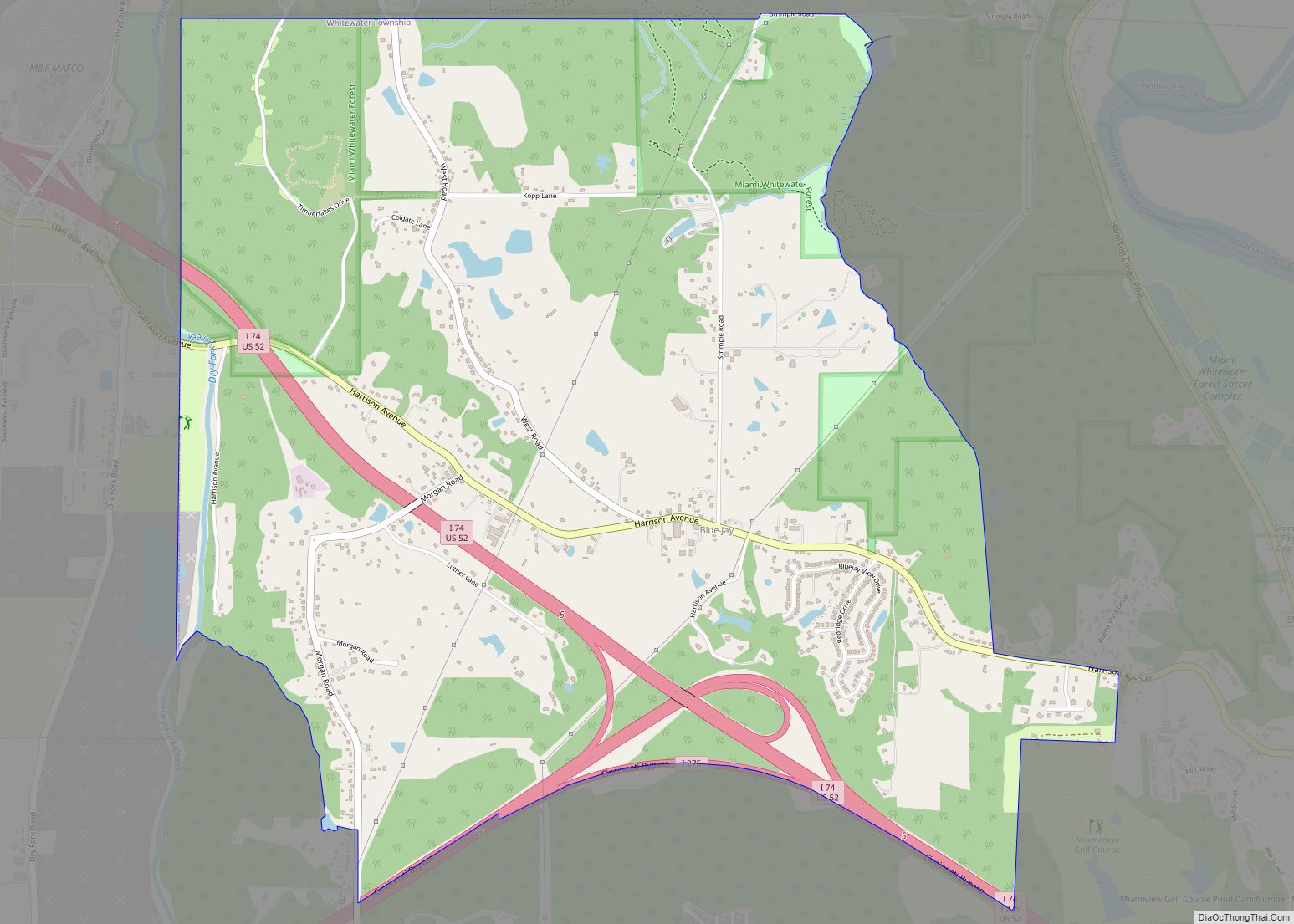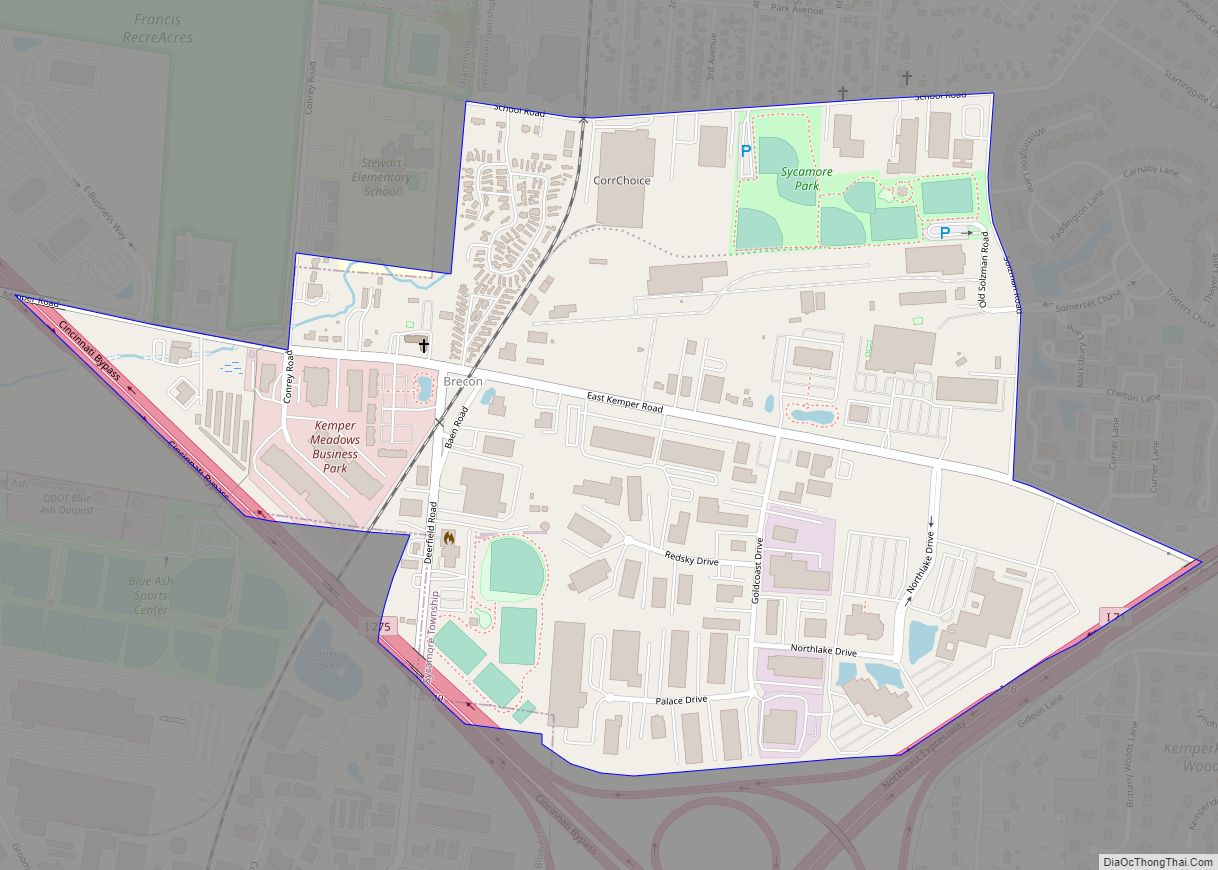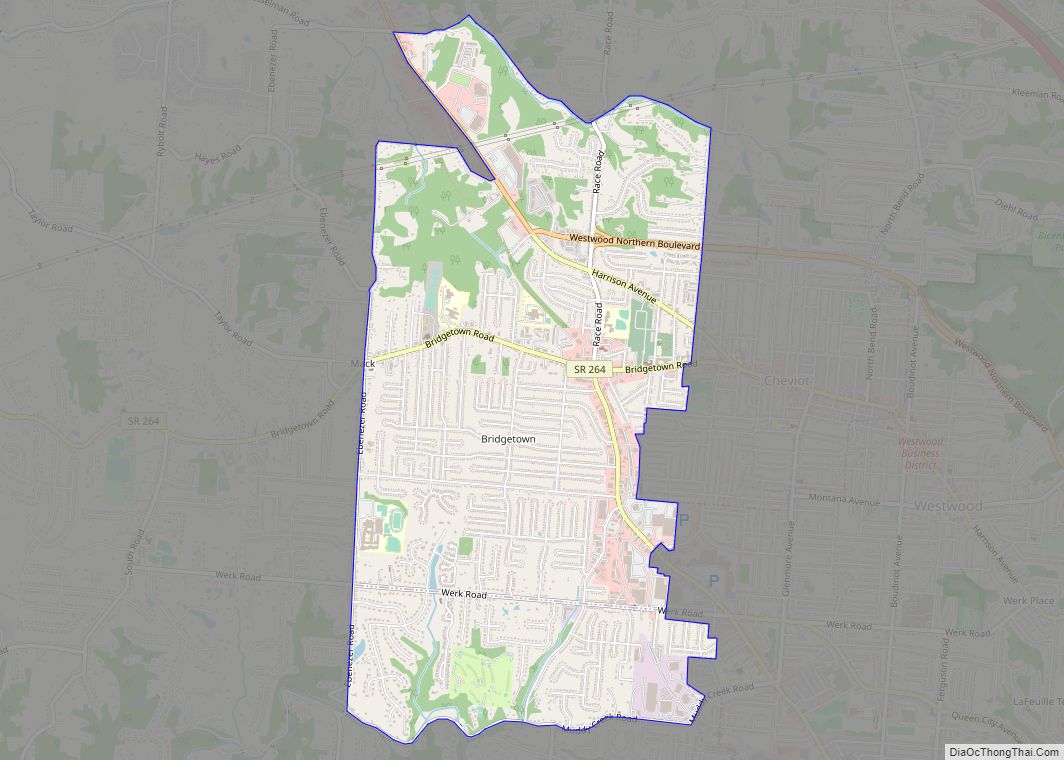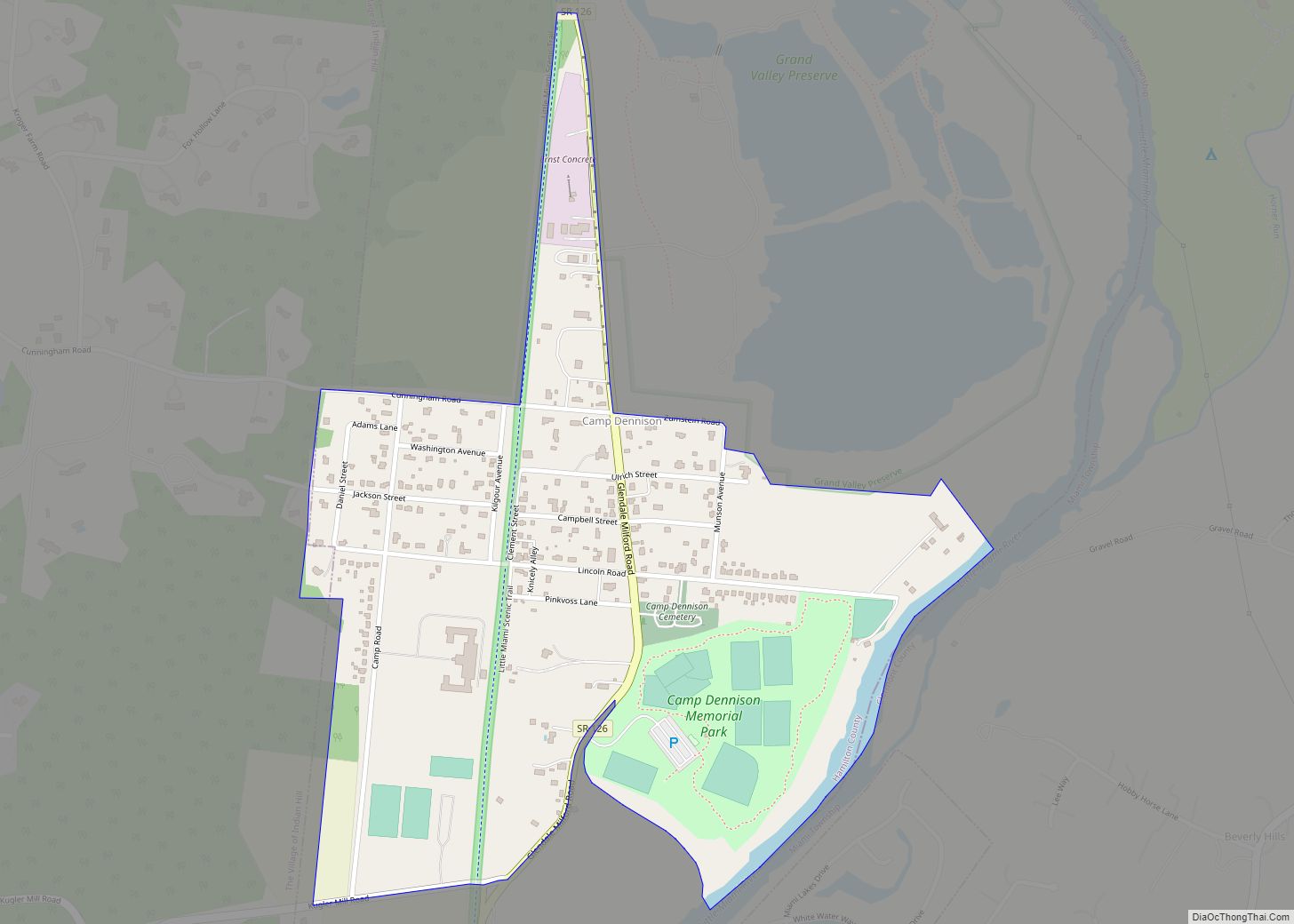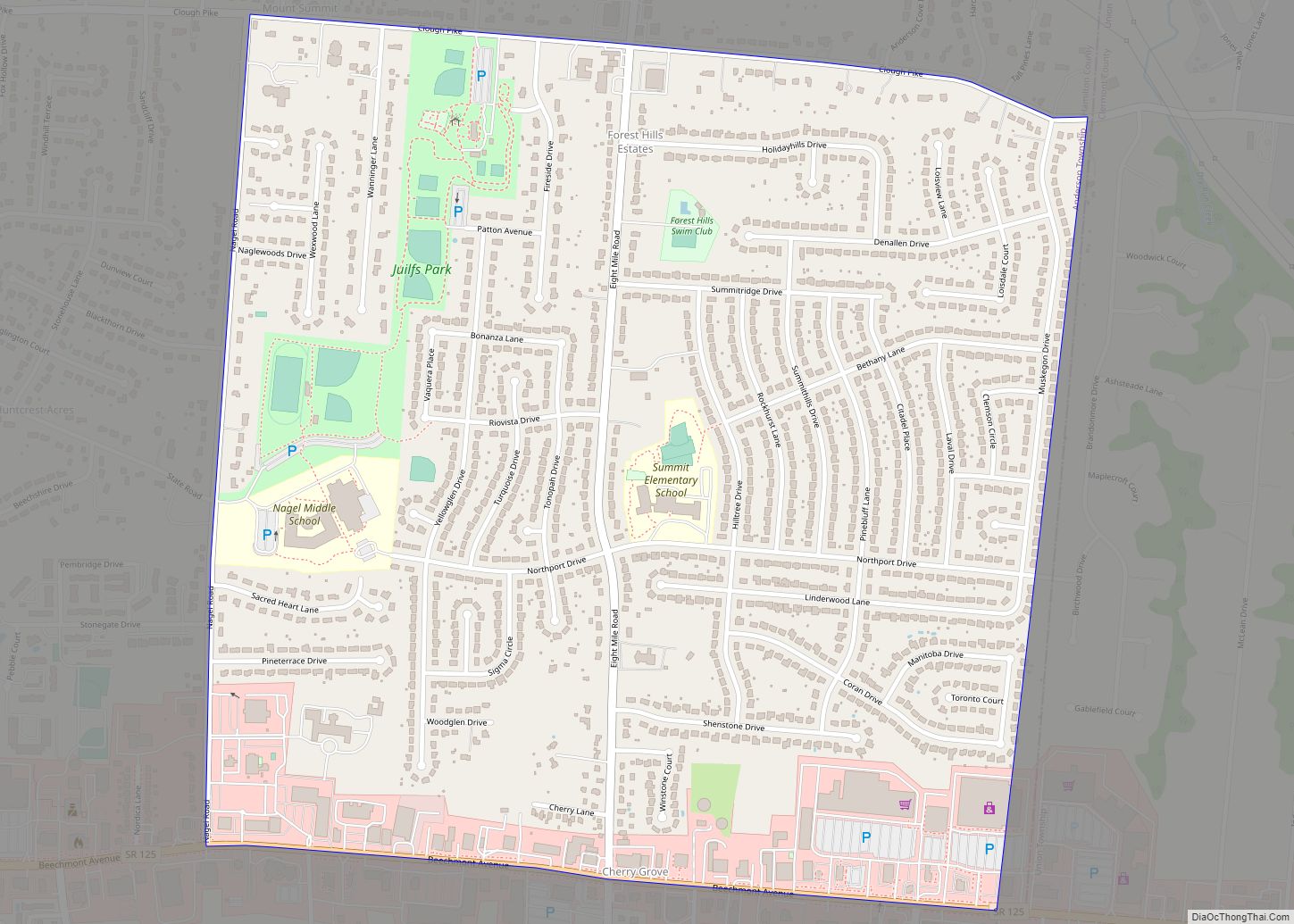North College Hill is a city in Hamilton County in the southwestern part of the U.S. state of Ohio approximately ten miles north of downtown Cincinnati. As of the 2020 census, the city population was 9,663. The city takes its name from its proximity to the Cincinnati neighborhood of College Hill (formerly Pleasant Hill) which borders it to the south.
| Name: | North College Hill city |
|---|---|
| LSAD Code: | 25 |
| LSAD Description: | city (suffix) |
| State: | Ohio |
| County: | Hamilton County |
| Elevation: | 823 ft (251 m) |
| Total Area: | 1.83 sq mi (4.73 km²) |
| Land Area: | 1.82 sq mi (4.72 km²) |
| Water Area: | 0.01 sq mi (0.01 km²) |
| Total Population: | 9,663 |
| Population Density: | 5,306.43/sq mi (2,049.35/km²) |
| ZIP code: | 45224, 45239, 45231 |
| Area code: | 513 |
| FIPS code: | 3956322 |
| GNISfeature ID: | 1065164 |
| Website: | www.northcollegehill.org |
Online Interactive Map
Click on ![]() to view map in "full screen" mode.
to view map in "full screen" mode.
North College Hill location map. Where is North College Hill city?
History
One of the first easterners to survey the area was John Cleves Symmes, a judge and former Congressman from New Jersey, after whom Symmes Township is named. Symmes visited the area in 1787 and received tentative permission from the new Federal government to purchase a section of land between the Little Miami and Great Miami Rivers. This tract became known as the “Symmes Purchase” or “Miami Purchase” and extended south to the Ohio River.
Several of the pioneers who migrated across the midwest to claim a part of Symmes’ tract are buried in North College Hill’s oldest landmark, the LaBoyteaux-Cary cemetery. Established in approximately 1806, the cemetery includes the graves of two Revolutionary War veterans and several members of the Cary family. The last burial in the cemetery was in 1860.
Cary family
In 1813–14, William Cary, having migrated from New Hampshire to Cincinnati in 1802, purchased 491 acres (1.99 km) north of Cincinnati along what is now Hamilton Avenue (U.S. Route 127). Cary built a log cabin and moved his family to this “wilderness,” then known as Mill Creek Township.
Soon after, William Cary purchased an additional 75 acres (300,000 m) north of North Bend Road adjacent to his original tract, and sold part of it to his nephew Robert Cary. Robert called the land Clovernook Farm and initially erected a small frame house for his family. In 1832, he built the white, brick house now known as Cary Cottage (see photo) which stands on the campus of the Clovernook Center for the Blind and Visually Impaired and is listed on the National Register of Historic Places. Within a year of his settlement, Robert also laid out the first community in the area, called Clovernook, on the east side of Hamilton Avenue.
Robert Cary and his wife Elizabeth raised nine children, two of whom, Alice and Phoebe, became well-known poets and writers. Both girls began having their poems published as teenagers, and they eventually counted among their admirers Massachusetts poet and abolitionist John Greenleaf Whittier, New York Tribune newspaper editor Horace Greeley, and author Edgar Allan Poe, who pronounced Alice Cary’s Pictures of Memory, “one of the most musically perfect lyrics in the English language”.
Cary Cottage became the first home for blind women in Ohio through the work of the Trader sisters, Florence and Georgia (who was blind). In 1903 the Cary house and the land surrounding it were purchased by William Procter, grandson of the Procter & Gamble co-founder, in order to give them in trust to the Traders. The sisters used the land to establish the Clovernook home and provide employment to visually impaired women as a source of dignity and direction. Today, the Clovernook Center for the Blind and Visually Impaired offers instruction, employment, community living and low vision services for men and women, and runs three manufacturing departments, including one of the world’s largest volume producers of Braille publications.
Religious and legal reform
In the latter part of the nineteenth century, North College Hill was the home of Dr. Isaac Mayer Wise, who has been called “the most prominent Jew of his time in the United States” for his influence as one of the early leaders of Reform Judaism in America.
In 1861, Wise and his wife Therese bought a house and 42-acre (170,000 m) farm near the current intersection of Goodman and Hamilton Avenues, where they raised a family of ten children. Wise added to the original farmhouse until it included 13 rooms on various levels. The farm, meanwhile, allowed him to carry out agricultural experiments and to enjoy the opportunity to own his own land.
A park near the site of his former farm was dedicated to Wise. In 2022, the park was renovated and re-dedicated.
In 1925, North College Hill Mayor A. R. Pugh was involved in a Prohibition case. Ohio law allowed small towns like North College Hill to operate “liquor courts”. These courts had authority over their entire county. Further, the Crabbe Act allowed local towns, mayors, and police departments to keep at least some of the fines imposed by these courts. In Tumey v. Ohio (1927), the U.S. Supreme Court ruled the Crabbe Act was unconstitutional as financial conflicts of interest impaired the right to a fair trial. The court’s decision in this case continues to provide precedent today in cases involving judicial impartiality.
Development of a community
Through the nineteenth century, as College Hill to the south and Mount Healthy to the north matured into towns, the area that was to become North College Hill remained largely farmland. Beginning in 1905, saw mill owner John Meyer used his surplus lumber to build a subdivision of small homes north of Galbraith Road and west of Hamilton Avenue and called it Meyerville. Within the next ten years, two other groups of homes – Clovernook, east of Hamilton Avenue, and Sunshine, south of Galbraith and west of Hamilton – were started. The three subdivisions, with a total of about 500 residents, were incorporated as the Village of North College Hill in 1916.
As the automobile stretched commuting distances, the village’s affordable housing attracted a growing population, and it increased from about 1,100 to 4,100 residents during the 1920s. In 1941, the village incorporated as a City and continued to grow until the population stabilized at its peak of around 12,000 by 1960. A few homes were removed for the completion of Ronald Reagan Cross County Highway (Ohio State Route 126) in 1997. Population has declined more or less steadily over the past four decades, according to the U.S. Census: 1970 12,363; 1980 10,990; 1990 11,002; 2000 10,082; 2010 9,397.
In 2007, Money magazine listed the city sixth among places “where homes are affordable”. On November 6, 2007 a ballot initiative to make North College Hill a charter city was passed by the voters. In 2011 North College Hill was rated the “best place to raise kids in Ohio” by Bloomberg Businessweek, based on such factors as school performance, the number of schools, crime statistics, cost of living, job growth, air quality, ethnic diversity, and access to recreational facilities.
North College Hill Road Map
North College Hill city Satellite Map
Geography
North College Hill is located at 39°13′2″N 84°33′9″W / 39.21722°N 84.55250°W / 39.21722; -84.55250 (39.217105, -84.552637).
According to the United States Census Bureau, the city has a total area of 1.83 square miles (4.74 km), all land.
See also
Map of Ohio State and its subdivision:- Adams
- Allen
- Ashland
- Ashtabula
- Athens
- Auglaize
- Belmont
- Brown
- Butler
- Carroll
- Champaign
- Clark
- Clermont
- Clinton
- Columbiana
- Coshocton
- Crawford
- Cuyahoga
- Darke
- Defiance
- Delaware
- Erie
- Fairfield
- Fayette
- Franklin
- Fulton
- Gallia
- Geauga
- Greene
- Guernsey
- Hamilton
- Hancock
- Hardin
- Harrison
- Henry
- Highland
- Hocking
- Holmes
- Huron
- Jackson
- Jefferson
- Knox
- Lake
- Lake Erie
- Lawrence
- Licking
- Logan
- Lorain
- Lucas
- Madison
- Mahoning
- Marion
- Medina
- Meigs
- Mercer
- Miami
- Monroe
- Montgomery
- Morgan
- Morrow
- Muskingum
- Noble
- Ottawa
- Paulding
- Perry
- Pickaway
- Pike
- Portage
- Preble
- Putnam
- Richland
- Ross
- Sandusky
- Scioto
- Seneca
- Shelby
- Stark
- Summit
- Trumbull
- Tuscarawas
- Union
- Van Wert
- Vinton
- Warren
- Washington
- Wayne
- Williams
- Wood
- Wyandot
- Alabama
- Alaska
- Arizona
- Arkansas
- California
- Colorado
- Connecticut
- Delaware
- District of Columbia
- Florida
- Georgia
- Hawaii
- Idaho
- Illinois
- Indiana
- Iowa
- Kansas
- Kentucky
- Louisiana
- Maine
- Maryland
- Massachusetts
- Michigan
- Minnesota
- Mississippi
- Missouri
- Montana
- Nebraska
- Nevada
- New Hampshire
- New Jersey
- New Mexico
- New York
- North Carolina
- North Dakota
- Ohio
- Oklahoma
- Oregon
- Pennsylvania
- Rhode Island
- South Carolina
- South Dakota
- Tennessee
- Texas
- Utah
- Vermont
- Virginia
- Washington
- West Virginia
- Wisconsin
- Wyoming
